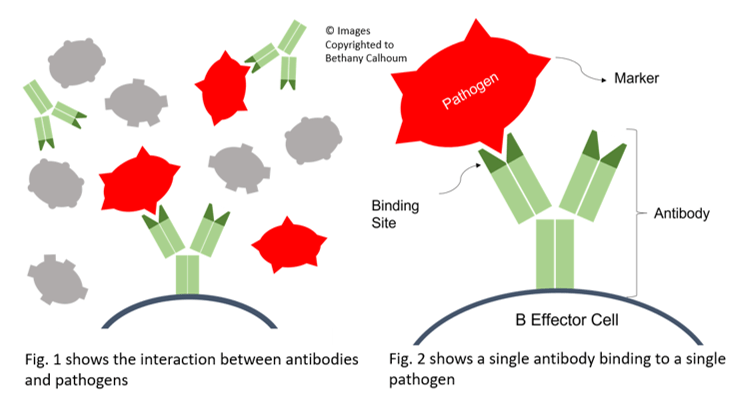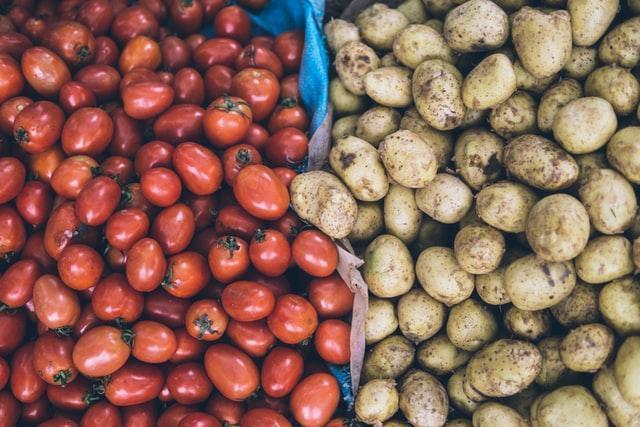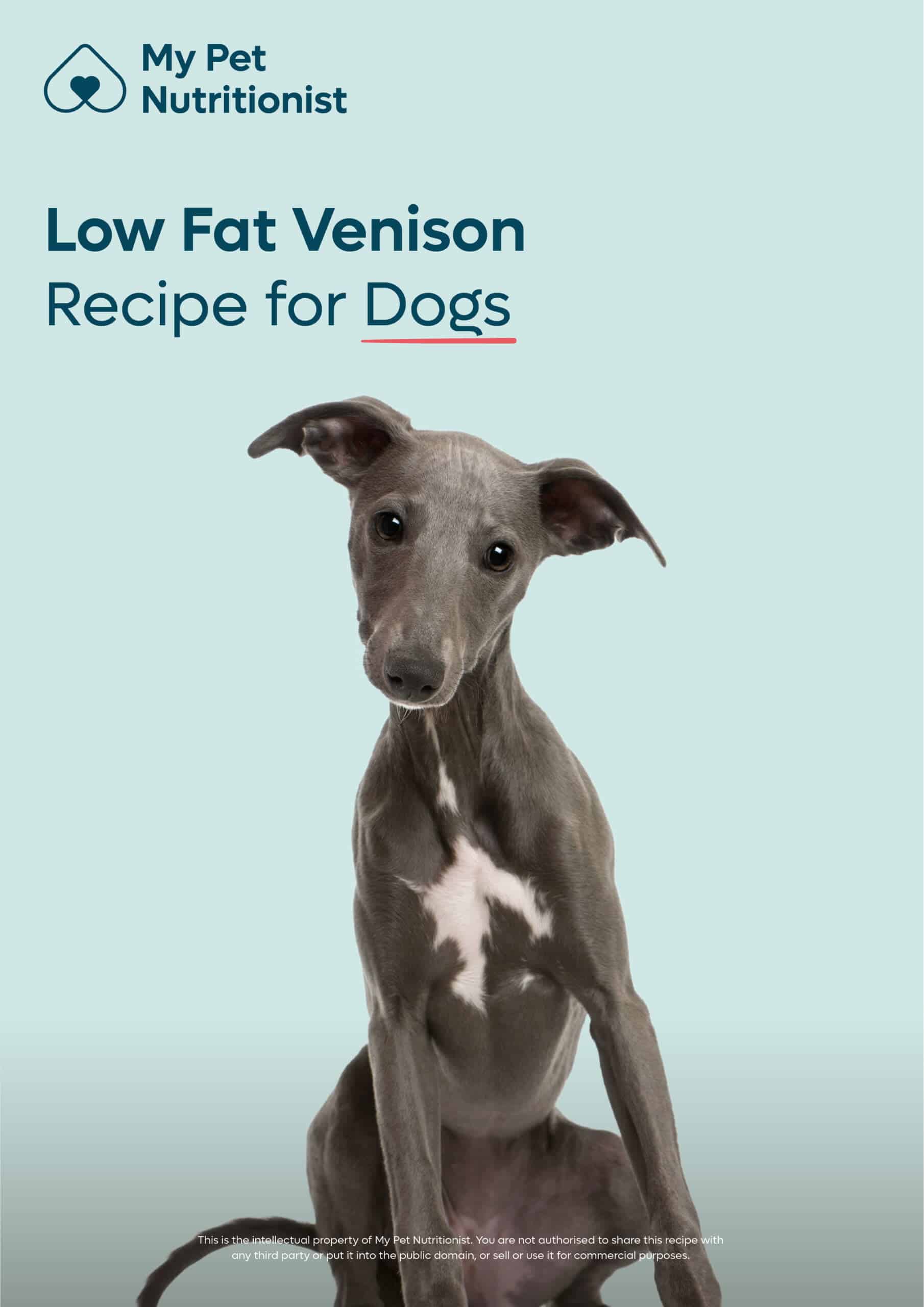-
£29.99£29.99£119.00£19.99£6.99
Cart
8
Cart
8


 Read Now
Read Now
 Read Now
Read Now
 Read Now
Read Now
 Read Now
Read Now
 Read Now
Read Now
 Read Now
Read Now
 Read Now
Read Now
-
£29.99£29.99£119.00£19.99£6.99

Lectins and Should My Dog Eat Them?
- April 12, 2021
- 6 min read
In 1988 a hospital launched a “healthy eating day” in its staff canteen at lunchtime. One dish contained red kidney beans, and 31 portions were served.
At 3pm one of the customers, a surgical registrar, vomited in theatre. Over the next four hours10 more customers suffered profuse vomiting, some with diarrhoea. All had recovered by next day. No pathogens were isolated from the food, but the beans contained an abnormally high concentration of the lectin phyto haemagglutinin.
What on earth are these we hear you wonder?
Well, lectins are often described as an anti-nutrient and as they are found in potatoes, beans, lentils, peas, soybeans, nightshade vegetables and grains, we thought we’d give you the 411 on them.
Lectins are carbohydrate binding proteins present in most plants, especially seeds and tubers like cereals, potatoes, and beans. Their original purpose was protection. They would produce an inflammatory response in the animal that ate them – so they wouldn’t eat them again. Humans and Dogs are largely unable to digest them, but friendly bacteria in the gut can lend a hand.
Until recently their main use was as histology and blood transfusion reagents, but in the past few decades we have realised that many lectins are
(a) toxic, inflammatory, or both;
(b) resistant to cooking and digestive enzymes; and
(c) present in much of our food
Well, it’s not sounding good is it!
Findings here
As we know, the gut wall does exactly that – keeps things in and keeps things out! It requires tight junction integrity to ensure rogue particles of food don’t get where they shouldn’t. Whenever and however this integrity is compromised, inflammation ensues! The other issue here is that lectins are also seen to inhibit the repair of resident gut epithelial cells.
Sadly, not only do rogue particles get where they shouldn’t, but so do the lectins and because of their binding properties, lectins stimulate antigens on cells that do not normally display them like pancreatic islet and thyroid cells – what this means is the body will attack cells it normally wouldn’t because of the confusion. This is why lectins are sometimes implicated in autoimmune disorders, including cases of rheumatoid arthritis.
Lectins and Rheumatoid Arthritis
A normal IgG (type of antibody) molecule possesses carbohydrate side chains, which end with the molecule galactose. In rheumatoid arthritis much of the galactose is missing, so the next molecule along—N-acetyl glucosamine—is exposed instead. Wheat lectin has an affinity for this molecule, and so binds (when it normally wouldn’t with the terminal molecule inits normal place).
Lectins and Urinary Tract Infections
In a similar premise, D-mannose is a sugar with a similar activity to N-acetyl-glucosamine. This too binds to lectins found on some microorganisms. Some bacteria responsible for urinary tract infections contain lectins specific for the sugar mannose and use these lectins to bind tightly to mannose -rich tissue in the bladder walls – therefore initiating infection. D-mannose supplementation provides a decoy for these bacteria.
Lectins and Gluten
There is also the idea that gluten can act as a lectin with toxic properties for intestinal cells. Together with the gut-associated lymphoid tissue and the neuroendocrine network, the intestinal epithelial barrier plays a role in the tolerance and immunity to non-self-antigens. Zonulin is a protein that helps regulate permeability in the gut by opening and closing tight junctions. Zonulin has been shown to be upregulated in many autoimmune diseases and it appears that gluten may be a strong trigger of zonulin.
Lectins and Histamine
Lectins also cause discharge of histamine from gastric mast cells which stimulates acid secretion. We need acid secretion to aid digestion, but it’s like the story of Goldilocks again – we need just enough, not too much (or too little).
Not only does histamine stimulate acid secretion, but it has also its own little purpose in the body, chiefly the immune response.
So, not only do we have rogue particles escaping due to poor gut integrity (thanks to lectins), but we also have increased histamine production, when then increases the likelihood of cross-reactivity. In short, tricking the body into thinking it needs to react to something it most likely doesn’t.
Now, insulin is needed in the body, it helps get glucose to where it needs to be, but do we really need things mimicking it?
Not when “Low concentrations of wheat germagglutinin (plant lectin) enhance the specific binding of insulin to receptors of fat cells and liver membranes.”
Findings here
In this case, imitation is not the sincerest form of flattery.
But there are other reasons why lectins are deemed anti-nutrients.
Animal and cell studies have found that active lectins can interfere with the absorption of minerals, especially calcium, iron, phosphorus, and zinc. Legumes and cereals often contain these minerals, so the presence of lectins may prevent the absorption and use of these minerals in the body. As we have already explored, lectins can also bind to cells lining the digestive tract which may also disrupt the breakdown and absorption of nutrients and affect the growth and action of intestinal flora.
However, on the other side of the scale, lectin containing foods are sometimes associated with lower rates of cardiovascular disease and diabetes, because they are rich in fibre.
So, what do we do?
The take home is that lectins are largely indigestible by humans and dogs. Their original purpose was to stop predatory animals from eating them. For that reason, they are sometimes problematic, and they can be detrimental to gut integrity and healing (along with instigators of immune response). So, if you are feeding a diet that contains lectins and not seeing any progress – it may be worth a consideration.
Lectin Containing Foods:
Thanks for reading!
MPN Team x
At 3pm one of the customers, a surgical registrar, vomited in theatre. Over the next four hours10 more customers suffered profuse vomiting, some with diarrhoea. All had recovered by next day. No pathogens were isolated from the food, but the beans contained an abnormally high concentration of the lectin phyto haemagglutinin.
What on earth are these we hear you wonder?
Well, lectins are often described as an anti-nutrient and as they are found in potatoes, beans, lentils, peas, soybeans, nightshade vegetables and grains, we thought we’d give you the 411 on them.Lectins are carbohydrate binding proteins present in most plants, especially seeds and tubers like cereals, potatoes, and beans. Their original purpose was protection. They would produce an inflammatory response in the animal that ate them – so they wouldn’t eat them again. Humans and Dogs are largely unable to digest them, but friendly bacteria in the gut can lend a hand.
Until recently their main use was as histology and blood transfusion reagents, but in the past few decades we have realised that many lectins are
(a) toxic, inflammatory, or both;
(b) resistant to cooking and digestive enzymes; and
(c) present in much of our food
Well, it’s not sounding good is it!
The really disturbing finding came with the discovery in 1989 that some food lectins get past the gut wall and deposit themselves in distant organs.At high dietary levels, it is thought that lectins cause damage to the structure of the brush borders of the small intestine. In lectin fed rodents, the mucosal membrane in the small intestine was stripped, compromising the gut integrity. This compromise has also been linked to abnormal bacterial proliferation.
Findings here
As we know, the gut wall does exactly that – keeps things in and keeps things out! It requires tight junction integrity to ensure rogue particles of food don’t get where they shouldn’t. Whenever and however this integrity is compromised, inflammation ensues! The other issue here is that lectins are also seen to inhibit the repair of resident gut epithelial cells.
Sadly, not only do rogue particles get where they shouldn’t, but so do the lectins and because of their binding properties, lectins stimulate antigens on cells that do not normally display them like pancreatic islet and thyroid cells – what this means is the body will attack cells it normally wouldn’t because of the confusion. This is why lectins are sometimes implicated in autoimmune disorders, including cases of rheumatoid arthritis.
Lectins and Rheumatoid Arthritis
A normal IgG (type of antibody) molecule possesses carbohydrate side chains, which end with the molecule galactose. In rheumatoid arthritis much of the galactose is missing, so the next molecule along—N-acetyl glucosamine—is exposed instead. Wheat lectin has an affinity for this molecule, and so binds (when it normally wouldn’t with the terminal molecule inits normal place).This is why glucosamine has found it’s way as an anti arthritic supplement – wheat lectin can be blocked by N-acetyl-glucosamine.
Lectins and Urinary Tract Infections
In a similar premise, D-mannose is a sugar with a similar activity to N-acetyl-glucosamine. This too binds to lectins found on some microorganisms. Some bacteria responsible for urinary tract infections contain lectins specific for the sugar mannose and use these lectins to bind tightly to mannose -rich tissue in the bladder walls – therefore initiating infection. D-mannose supplementation provides a decoy for these bacteria.Lectins and Gluten
There is also the idea that gluten can act as a lectin with toxic properties for intestinal cells. Together with the gut-associated lymphoid tissue and the neuroendocrine network, the intestinal epithelial barrier plays a role in the tolerance and immunity to non-self-antigens. Zonulin is a protein that helps regulate permeability in the gut by opening and closing tight junctions. Zonulin has been shown to be upregulated in many autoimmune diseases and it appears that gluten may be a strong trigger of zonulin.Lectins and Histamine
Lectins also cause discharge of histamine from gastric mast cells which stimulates acid secretion. We need acid secretion to aid digestion, but it’s like the story of Goldilocks again – we need just enough, not too much (or too little).Not only does histamine stimulate acid secretion, but it has also its own little purpose in the body, chiefly the immune response.
So, not only do we have rogue particles escaping due to poor gut integrity (thanks to lectins), but we also have increased histamine production, when then increases the likelihood of cross-reactivity. In short, tricking the body into thinking it needs to react to something it most likely doesn’t.
Can you see why lectins are often dubbed the great mimics? They confuse the body into doing all sorts of things.They also appear to mimic insulin.
Now, insulin is needed in the body, it helps get glucose to where it needs to be, but do we really need things mimicking it?
Not when “Low concentrations of wheat germagglutinin (plant lectin) enhance the specific binding of insulin to receptors of fat cells and liver membranes.”
Findings here
In this case, imitation is not the sincerest form of flattery.
But there are other reasons why lectins are deemed anti-nutrients.
Animal and cell studies have found that active lectins can interfere with the absorption of minerals, especially calcium, iron, phosphorus, and zinc. Legumes and cereals often contain these minerals, so the presence of lectins may prevent the absorption and use of these minerals in the body. As we have already explored, lectins can also bind to cells lining the digestive tract which may also disrupt the breakdown and absorption of nutrients and affect the growth and action of intestinal flora.
However, on the other side of the scale, lectin containing foods are sometimes associated with lower rates of cardiovascular disease and diabetes, because they are rich in fibre.
So, what do we do?
Lectins are most potent in their raw state, so cooking can inactivate most lectins. They are also water-soluble, so soaking also removes them.There will also be those who suggest that not everyone has an issue with lectins, and this is true. Not everyone gets insulin dependent diabetes, rheumatoid arthritis, peptic ulcers or IgA nephropathy. This is largely due to a biological variation.
The take home is that lectins are largely indigestible by humans and dogs. Their original purpose was to stop predatory animals from eating them. For that reason, they are sometimes problematic, and they can be detrimental to gut integrity and healing (along with instigators of immune response). So, if you are feeding a diet that contains lectins and not seeing any progress – it may be worth a consideration.
Lectin Containing Foods:
- legumes, such as beans, lentils, peas, soybeans, and peanuts
- nightshade vegetables, such as tomatoes and potatoes
- dairy products, including milk
- grains, such as barley, quinoa, and rice
- pasture-raised meats
- cooked sweet potatoes
- leafy, green vegetables
- cruciferous vegetables, such as broccoli
- mushrooms
Thanks for reading!
MPN Team x
Customer Reviews
Explore related products
Related articles

Dietary NeedsGut HealthAllergiesArthritisItching & AllergiesLeaky Gut
The Link Between Leaky Gut and Arthritis
Jan 31 2023
•
9 mins 40 secs

Dietary NeedsGut HealthAllergiesArthritisItching & AllergiesLeaky Gut
The Connection Between Leaky Gut and Autoimmunity – Part 2
Jan 18 2023
•
7 mins 30 secs

Dietary NeedsGut HealthAllergiesArthritisItching & AllergiesLeaky Gut
The Connection Between Leaky Gut and Autoimmunity – Part 1
Jan 18 2023
•
4 mins

Dietary NeedsGut HealthAllergiesArthritisItching & AllergiesLeaky Gut
Why Is My Dog Itchy?
Oct 21 2021
•
5 mins 39 secs

Dietary NeedsGut HealthAllergiesArthritisItching & AllergiesLeaky Gut
What is The Gut Barrier?
Aug 25 2021
•
5 min read

Dietary NeedsGut HealthAllergiesArthritisItching & AllergiesLeaky Gut
A Brief Guide to Histamine Intolerance for Dogs
Jul 13 2021
•
4 min read

Dietary NeedsGut HealthAllergiesArthritisItching & AllergiesLeaky Gut
Lectins and Should My Dog Eat Them?
Apr 12 2021
•
6 min read
✕













